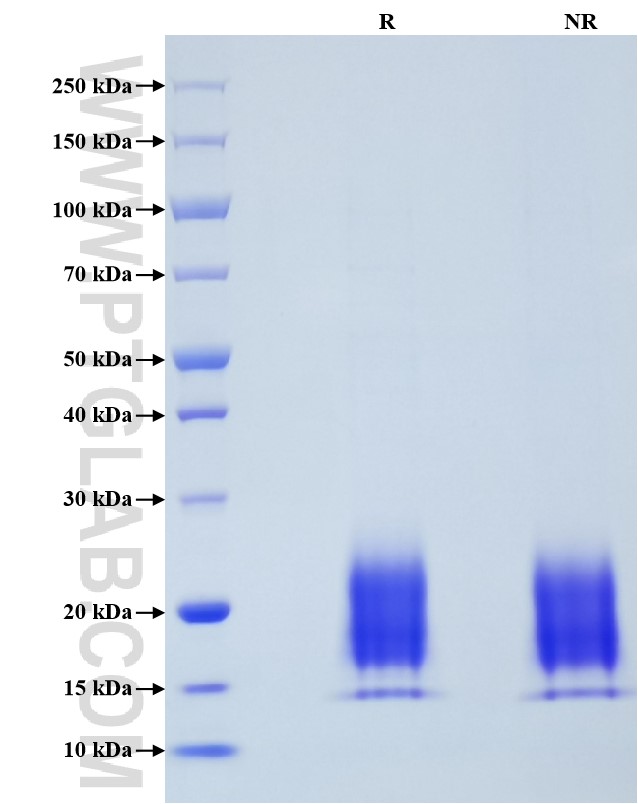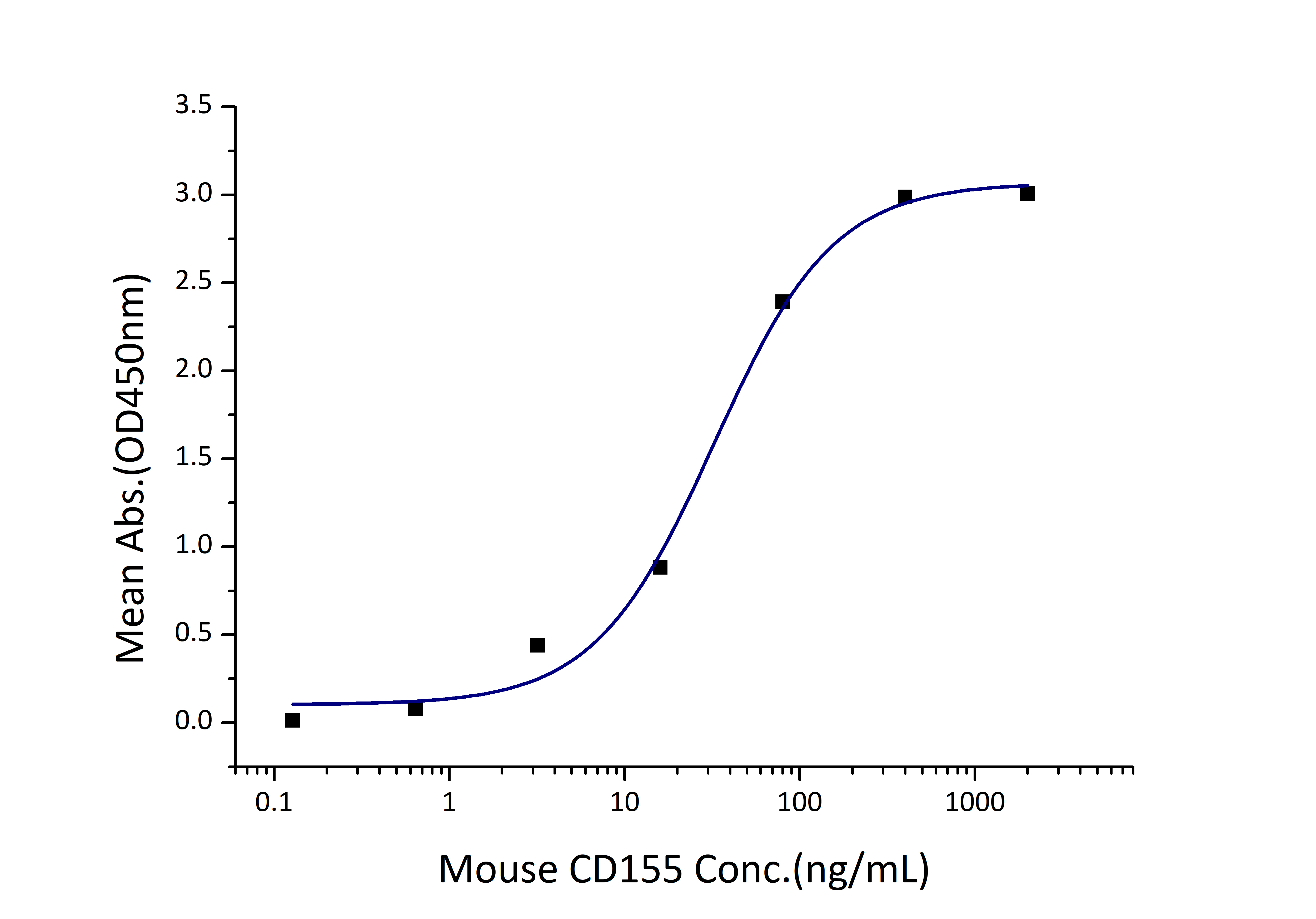Recombinant Mouse TIGIT protein (His Tag)
ED50
16-65 ng/mL
Species
Mouse
Purity
>95 %, SDS-PAGE
GeneID
100043314
Accession
NP_001139797.1
验证数据展示
Technical Specifications
| Purity | >95 %, SDS-PAGE |
| Endotoxin Level | <1.0 EU/μg protein, LAL method |
| Biological Activity |
Immobilized Mouse TIGIT (His tag) at 1 μg/mL (100 μL/well) can bind Mouse CD155 (hFc tag) with a linear range of 16-65 ng/mL. |
| Source | HEK293-derived Mouse TIGIT protein Gly26-Thr143 (Accession# NP_001139797.1) with a His tag at the C-terminus. |
| Predicted Molecular Mass | 13.7 kDa |
| SDS-PAGE | 15-25 kDa, reducing (R) conditions |
| Formulation | Lyophilized from sterile PBS, pH 7.4. Normally 5% trehalose and 5% mannitol are added as protectants before lyophilization. |
| Reconstitution | Briefly centrifuge the tube before opening. Reconstitute at 0.1-0.5 mg/mL in sterile water. |
| Storage |
It is recommended that the protein be aliquoted for optimal storage. Avoid repeated freeze-thaw cycles.
|
| Shipping | The product is shipped at ambient temperature. Upon receipt, store it immediately at the recommended temperature. |
Background
TIGIT (T-cell immunoreceptor with Ig and ITIM domains), also known as VSIG9 or VSTM3, is an immune receptor expressed on T cells, including Treg and memory subsets, as well as on NK cells. It contains an immunoglobulin variable domain, a transmembrane domain, and an immunoreceptor tyrosine-based inhibitory motif (ITIM). TIGIT binds to poliovirus receptor (PVR, also called CD155) with high affinity, and also to PVRL2 (CD112) with lower affinity. The interaction of TIGIT with PVR on dendritic cells increases the secretion of IL-10 and decreases the secretion of proinflammatory cytokine and suppresses T-cell activation by promoting the generation of mature immunoregulatory dendritic cells. TIGIT can inhibit NK cytotoxicity directly through its ITIM.
References:
1.Xin Yu, et al. (2009) Nat Immunol. 10(1):48-57. 2.Noa Stanietsky, et al. (2009) Proc Natl Acad Sci U S A. 106(42):17858-63. 3.Joe-Marc Chauvin, et al. (2020) J Immunother Cancer. 8(2):e000957.

